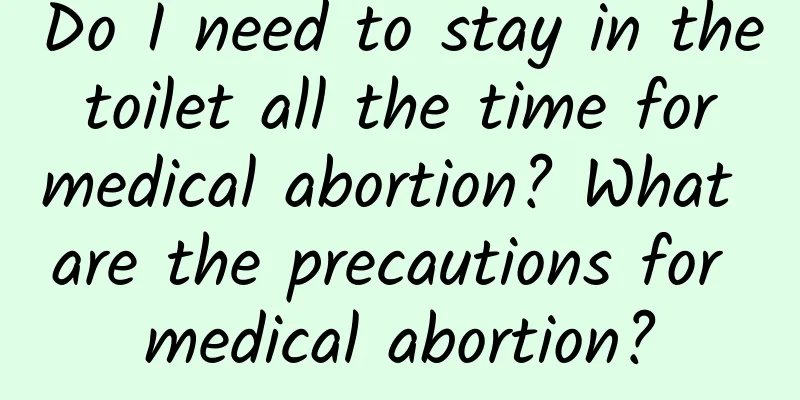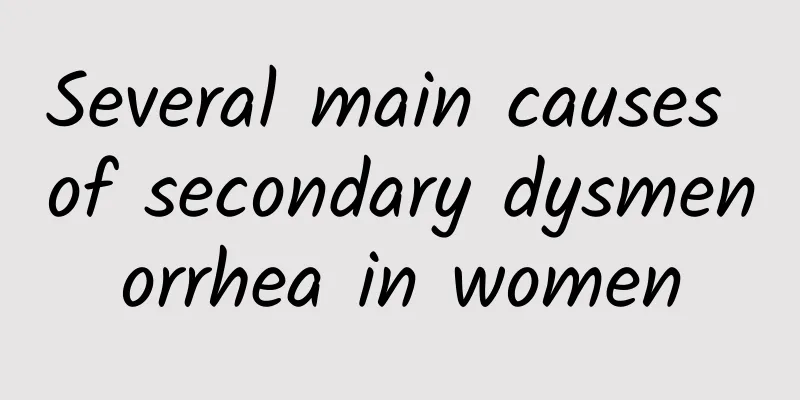Can sanitary napkins identify uterine fibroids?

|
Most female friends who suffer from uterine diseases do not understand their own diseases because they do not know much about this disease in their daily lives and do not go out of their way to learn about it. Uterine fibroids are a type of uterine disease. How can you tell if you have uterine fibroids? You can learn about it through your daily life. In fact, uterine fibroids can be judged by the amount of sanitary napkins used. If you use more than three packs of sanitary napkins per month, it may be caused by uterine fibroids. Generally, the following symptoms indicate that you may have uterine fibroids: heavy and dripping menstruation. Generally, you should use no more than 2 packs of sanitary napkins per menstrual cycle. If you use more than 3 packs and the sanitary napkins are almost soaked, it is menorrhagia. Short, frequent and urgent urination; lower abdominal distension and discomfort, constipation; in severe cases, anemia may occur. The age group with a high incidence of uterine fibroids is 28 to 45 years old. Normally, if menopause occurs, uterine fibroids will also shrink as hormone levels decrease. "Women rarely suffered from uterine fibroids in the past, which was related to the high number of births. Because the ovaries do not ovulate during the ten months of pregnancy and the six months of breastfeeding, hormone secretion is at a low level, which plays a role in protecting the uterus." In addition, factors such as genetics, diet, obesity, and emotions can also affect the occurrence of uterine fibroids. Not every patient with uterine fibroids needs to undergo tumor removal surgery or even hysterectomy. If the diameter of the fibroid is greater than 5 cm, or the fibroid grows under the mucosa or in the uterine cavity, symptoms such as excessive menstrual flow, compression of the rectum, constipation, or difficulty in defecation will occur. If it affects normal life, surgery is recommended. If there is no fertility requirement or if the tumor is suspected to have become malignant, a hysterectomy is performed. If the diameter of the fibroid is less than 3 cm, it can be observed for a period of time before making a decision. |
<<: What to do with ectopic pregnancy? 3 ways to treat it
>>: Is uterine fibroid a benign tumor? Hysterectomy may be performed depending on the situation
Recommend
How to take good care of irregular menstruation in life?
Irregular menstruation is one of the many gynecol...
What psychological concerns do patients with vulvar leukoplakia have?
Vulvar leukoplakia is a common gynecological dise...
Laugh and be a healthy mother: old folk remedies for pregnancy and childbirth (Part 2)
Clinical studies have found that the level of vit...
In winter, appetite is out of control. Eating too much oily food can relieve greasiness and bring back sweetness without burden.
The temperature is low in winter, and in order to...
Drink unsweetened soy milk 30 minutes before meals to increase satiety
With the arrival of the long summer vacation, chi...
What should patients with uterine effusion pay attention to during treatment?
Most patients with uterine effusion have symptoms...
What to do with long-term irregular menstruation? Pay attention to these 3 points when treating irregular menstruation
Irregular menstruation is a problem for many wome...
Why is it painful to press an ovarian cyst?
Ovarian cysts are painful when pressed. This may ...
Symptoms of uterine fibroids complicated with pregnancy
Uterine fibroids, also known as uterine leiomyoma...
What are the specific reasons for early pregnancy miscarriage? There are 7 major reasons
Miscarriage during early pregnancy may be caused ...
What exercises can improve uterine fibroids?
Moderate exercise can have a positive impact on u...
The latest 1:1 anti-aging walking method to prevent brain degeneration
Do you have any of the following situations? &quo...
Clear "garlic" fatty liver! People with qi deficiency should eat 10 grams of sweet and sour garlic every day.
Garlic has been in abundant production recently a...
Will polycystic ovary get better if I lose weight?
Polycystic ovary is a disease caused by endocrine...
Abnormal yellow vaginal discharge with a bit of acidity
Abnormal leucorrhea that is yellow and has a sour...









